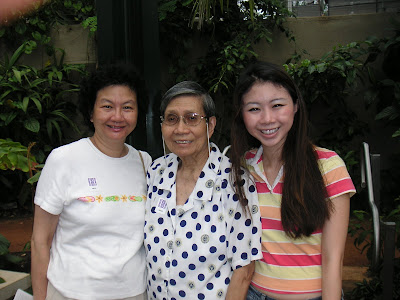It is 10 p.m. on a Saturday night, and I am reading on my bed at home in Los Angeles while enjoying a short break from medical school. My grandmother enters the room dragging a plastic-encased acrylic blanket because she is afraid that I will get cold in the early morning.
Around midnight, my grandmother spies me getting ready to sleep.
“Go to bed,” she tells me.
It is the last time that I see her alive.
At 1:43 a.m., the sound of my little brother calling my name rouses me from a dreamless sleep. I hear the slap of my mom’s slippers flying down the hallway and I rush to the bedroom shared by my grandmother and my 11-year-old brother, Jeremy. Jeremy is sitting bolt-upright in bed, his eyes wide with fright, and I assume that he had a nightmare. Then I realize that my grandmother is missing from her bed; the sheets are untouched.
Nothing frightens me more than the memory of seeing my grandmother sitting on the carpet, slumped against the side of her bed. She sits in an upright position, but her head sags at an unnatural angle, so that her face is completely buried in her chest. Her limbs are tangled together like wet noodles, and there was an eerie stillness and silence surrounding her form. It was like someone had cut the strings to a marionette and dropped the plaything into a haphazard pile on the floor.
My mom begins to shake my grandmother, telling her to wake up, and her voice becomes increasingly shrill. We call 911 and try to perform CPR via directions over the phone, but I notice that my grandmother is not breathing at all and her pulse is impossible to tell. As I watch the stillness settled over her torso, I realize for the first time that seeing a chest rising and falling is a miracle that I will never take for granted ever again.
During those minutes, I feel the intense irony of being a medical student and seeing my grandmother’s life slip away. When she remains lifeless despite the CPR, I find it impossible to decide whether my grandmother is (in a sense) failing my mother and me by not responding to our rescue efforts…or whether we are failing my grandmother through our sheer inexperience.
For medical students, death is a familiar specter. Personally, death has become a multi-dimensional experience. Last year, I worked with terminally ill cancer patients under the knowledge that almost everyone would be dead within a year. It broke my heart. Last year, I was also excited to pass on my job working with cancer patients to my gifted friend from high school, but she passed away unexpectedly in a rafting accident in Peru before she could graduate from college. These professional and personal experiences show death as a sudden truncation, a disappearance from the world, a strange sort of disconnect between life and the void that follows. It was like looking inside a tube and seeing a barrier represented by death.
This year in medical school, working with cadavers has given me insight on death from the other side of the tube – a postmortem perspective. I can see nerves, muscles, organs, but my insight into the emotions, characters, and personal lives of these donors has been cut off by that same barrier.
As a medical student, I knew that someone would die in front of me eventually. I just never expected it to be my grandmother. She crossed that barrier between life and death in front of my eyes, and it was painful to remember her loving admonishment to go to sleep while also recalling how every angle, line, and shape of her form struck me as those of a cadaver almost two hours later.
When the paramedics arrive, they declare that my grandmother is already gone. The police make a brief appearance to rule out any foul play, but by 3 a.m. the authorities vacate the house and leave my grandmother’s body on the floor of her bedroom. We have no idea how to handle the body. It is a ludicrous moment. So we call a funeral home and they send a pick-up service van to recover her body at 4 a.m. in the morning. I remember watching the red tail lights of the van carrying my grandmother’s body turn a corner and disappear into the darkness.
A week later, in another ludicrous moment, I sit next to a stranger at the airport surrounded by a group of fans. The stranger whips out a gold statuette – an Oscar – which he earned the night before. Curiosity wins over potential embarrassment when I ask him, “Excuse me, what did you win an Oscar for?”
“Best Original Screenplay,” he responds.
This isn’t helpful; I didn’t watch the Oscars.
“Little Miss Sunshine,” he nudges.
We chat briefly, and for some reason I tell him about my grandmother and how the experience reminded me of a moment in Little Miss Sunshine when the grandfather unexpectedly passes away in a motel. The stranger tells me about how he watched a documentary depicting a terminally ill patient in life and in death, and how he was struck by how death can transform a human being into a lifeless object wheeled onto a van. It was really important to include in Little Miss Sunshine, the stranger says, a little scene showing Greg Kinnear’s character watching his father’s body being borne away in a van that turns a corner and then continues onto the open road.
“It’s strange how life imitates art or how art imitates life” I say, realizing that my grandmother’s death will gain more subtle dimensions as the years progress. An experience never remains static, but instead grows more complex with time.













